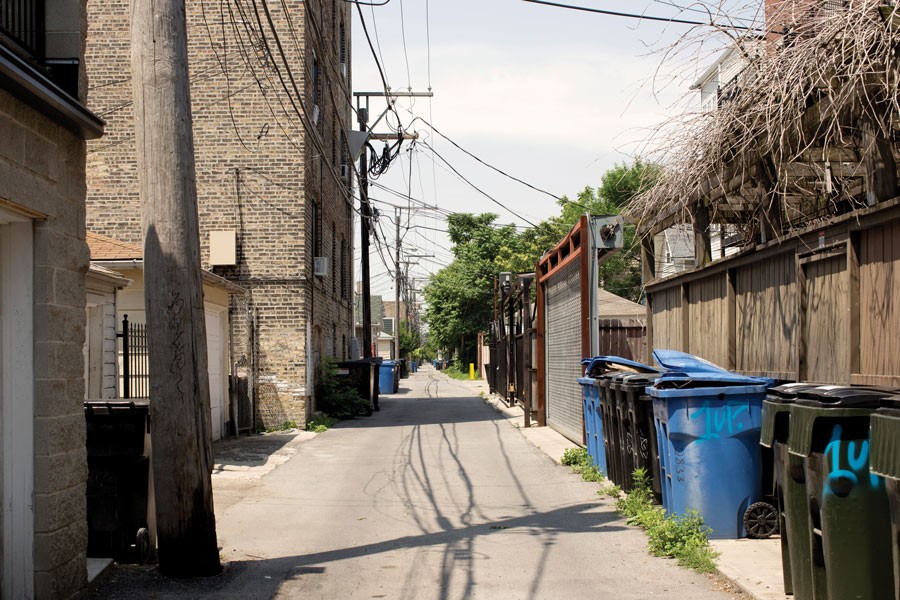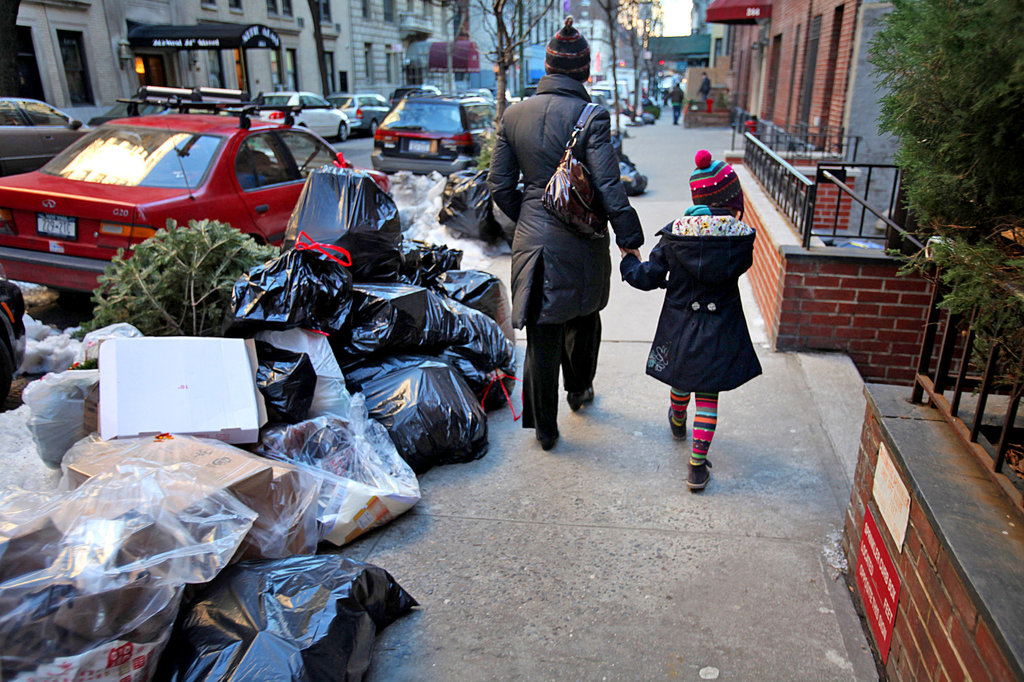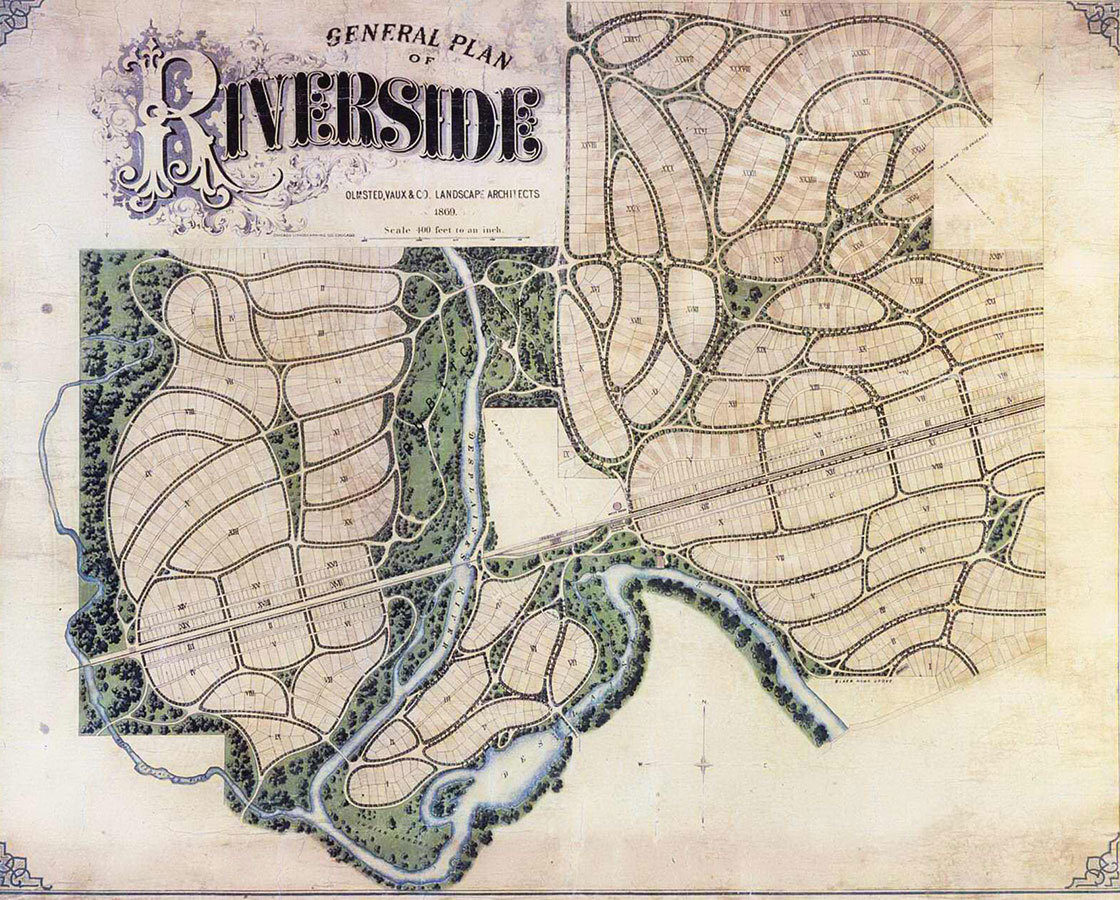By Tom Martin | January 10, 2020
Alleys and other forgotten urban spaces have long interested me. Upon seeing the Green Alley in Detroit in 2013, I have studied and meditated on the idea of alleyways and their greater potential. Over the course of 2020, I plan to dig into Chicago’s alleys as a case study, and reconsider what this urban form can do to enhance the communities around us.
Cities are inherently dense, complex, and ever-changing. As residents, it is impossible to process every component of a city, especially the mundane, when we are more concerned with groceries, commute times, and snow shoveling. We must streamline our attention for the sake of self-preservation. What are we missing when comparing rideshares or trudging through rush hour on the Dan Ryan? In Chicago, The Lakota Group’s hometown, one answer is the humble alleyway.
Derived from necessity and planned for simplicity, Chicago has the most extensive alleyway network in the country, totaling more than 1,900 miles. 1 Considering the land mass alone, it is remarkable how often alleyways go unseen. What are alleyways? Why do we have them? What do they do for us? How can they work better for us? Before addressing any of these questions, we must understand the history and importance of alleyways in Chicago.

A standard residential alley in Chicago. Image Credit: Sunshine Tucker
Defined as “a narrow passage behind or between buildings,” 2 the term ‘alleyway’ can be ambiguous. While alleyways can occur spontaneously, the City of Chicago planned for alleyways from the onset. The original town plat of 1830 included eighteen-foot-wide alleyways inscribed into “all 58 blocks.” 1 With the national land survey grid informing Chicago’s block structure, the alleyways of Chicago became continuous, predictable, and dependable places for trash collection, utility, commerce, and access. Still today, over 90 percent of the blocks in Chicago contain alleyways. 3
Preceding Chicago’s plan in 1830, the Commissioners Plan of New York City was penned in 1811. Similar to Chicago’s, the Plan of 1811 emphasized the orthogonal grid, despite it’s topographic and shoreline irregularities. Although similar, a prime difference between these two inaugural plans was the inclusion of alleyways. Headed by Gouverneur Morris, Simeon De Witt, and John Rutherford, New York City’s plan did not include alleyways, and instead maximized the amount of real estate available for development.4 Proving to be a major tradeoff, today New York City’s sidewalks are crowded with trash, and their city streets congested with service vehicles.5, 6
By the 1820’s, American alleyways were propagating due to the popularity of horses in the west, and the need to bring hay in and manure out. Older American cities, like New York, “followed established travel lanes, or were already too dense to add alleys.”7 By the time Chicago’s seminal plan was written, the need for utilitarian passages separate from commercial and residential frontages was well-established. This alleyway system was now viewed as the ‘capillaries’ connecting to the streets, or ‘arteries.’

A common street scene for trash collection in New York City. Image Credit: Richard Perry / New York Times
By providing alleyways within the center of blocks and limiting trash from primary pedestrian thoroughfares, the City of Chicago had managed to limit the spread of rodent borne diseases. On the contrary, New York City “had become one of the dirtiest cities in the world by the late 19th century,” owning a massive rodent problem and historic rates of death from diseases.5
The benefit of alleyways was undeniable, sure, but not always understood. Historically respected landscape architects Frederick Law Olmsted and Calvert Vaux planned the community of Riverside, Illinois in 1869, a picturesque community roughly 9 miles west of Chicago.3 Riverside inversed the city block structure utilized in Chicago by placing homes on the interior of a block, developing the trend of curbside trash collection. Furthermore, Riverside made a conscious decision to opt away from a grid-based street network, instead designing a curvilinear system. Until that point, all suburban communities had followed the lead of Chicago by designing their City blocks with alleyways down the center of a gridded network.
Leading up and into the industrial revolution of the early 20th century, community planning continued to move towards an alley-less style. This only increased as the dependency on cars increased. West-coast cities such as Los Angeles utilized interior block alleyways less, in favor of “driveways and side lanes.”7 Chicago managed to be planned between the periods of pre-American-alleyway (New York City) and the industrial revolution (Los Angeles). Although thousands of alleyways have been removed due to differing infrastructure to accommodate vehicular uses, the majority of alleys remain in tact today, proving to be an important piece of Chicago’s urban fabric.

Riverside’s curvilinear system contrasts the gridded systems to the east.
In the last several years, the appreciation of alleyways in the City of Chicago has re-emerged, even manifesting into a 2001 City-wide Green Alley initiative to improve and better utilize this essential resource. To this day, more than 300 Green Alleys have been installed throughout the City.8 Continued investment in these alleys is vital in order to manage utilities, trash, stormwater, and even pedestrians.
Chicago is known as the alleyway capital of the country, for good reason. Chicago’s initial and continued investments in its alleyways has served as an invaluable precedent for other cities and has paid dividends to every citizen of Chicago’s health and quality of life. Perhaps it sounds like hyperbole, but Chicago’s alleyways are as important to the City as Lake Michigan, the Chicago River, or the El. Alleyways tend to fade to the background, and that’s probably for the best. While alleyways aren’t particularly glamorous, Chicago functions as well as it does because of them.
Works Cited
1 Alleys and the Making Of Chicago’s Shadow City Steven Jackson – https://www.wbez.org/shows/curious-city/shadow-city-how-chicago-became-the-countrys-alley-capital/3f2b1e3d-f5f2-49c2-a3b8-8fb3fceacdc4
2 Alley: Definition Of Alley By Lexico https://www.lexico.com/en/definition/alley
3 Alleys By Encyclopedia of Chicago Michael P. Conzen – http://www.encyclopedia.chicagohistory.org/pages/38.html
4 Commissioners’ Plan Of 1811 https://en.wikipedia.org/wiki/Commissioners%27_Plan_of_1811
5 Talking Trash During the Dog Days: A Brief History Of Sanitation in New York City Nicholette Zeliadt – https://blogs.scientificamerican.com/observations/talking-trash-during-the-dog-days-a-brief-history-of-sanitation-in-new-york-city/
6 Cache That Trash Michael Pollak – https://www.nytimes.com/2011/12/25/nyregion/answers-to-questions-about-new-york.html?mtrref=www.google.com&assetType=REGIWALL
7 Chicago’s Alleys Date Back To the City’s Founding, Keep Our Trash Off the Sidewalk Today Mike Ewing and Patrick Elwood – https://wgntv.com/2019/11/14/chicagos-alleys-date-back-to-the-citys-founding-keep-our-trash-off-the-sidewalk-today/
8 The Chicago Green Alley Handbook an Action Guide To Create a Greener, Environmentally Sustainable Chicago Chicago Department Of Transportation – 2007